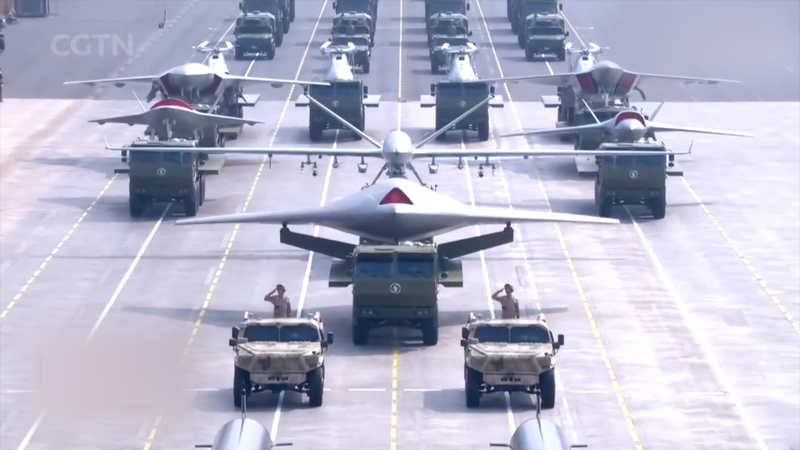Beijing lit up on September 3 as the Chinese mainland’s forces marked V-Day with a parade that felt straight out of a sci-fi epic. Alongside marching troops and classic hardware, a suite of sleek, unmanned systems stole the spotlight—land vehicles, sea drones and stealth aircraft showed a future where human soldiers may stay well behind the front lines.
On the ground, autonomous wheeled and tracked vehicles rolled forward without human drivers, equipped with multispectral sensors and AI networks for reconnaissance and supply missions. These prototype platforms hint at how logistics convoys and patrol units could operate with minimal human oversight.
At sea, high-speed unmanned vessels skimmed across the water, showcasing potential roles from coastal surveillance to mine-detection. Their compact designs and electric propulsion systems point to lower operational costs and quieter missions.
Above it all, stealth drones with angular wings cut through the sky, demonstrating advanced AI flight controls and real-time data links for precision targeting. Their ability to swarm—and to share information instantaneously—could reshape aerial tactics in the years ahead.
CGTN’s “China’s New Sword” series unpacks these technologies using publicly available data, offering English-language audiences a closer look at the specs and strategies behind the display. As countries and regions around the world watch closely, the parade raises big questions: will robots replace boots on the ground, and how will modern ethics and strategy evolve in a remote-controlled battlefield?
Reference(s):
China's New Sword: Are robot weapons replacing human soldiers?
cgtn.com
